November 20, 2024
On the first morning after hiding out on the left coast for nine days, the yard offers me bluebirds. Half a dozen recently arrived western bluebirds—although the word “blue” falls short. These eye-catching winged bundles of energy throw vibrant and unmatched color against the sky, more cerulean than blue. Or lazurite.
Or cobalt. Cobaltbirds.
Then, something else new. Tapping in the pear tree. A sapsucker hammers at the bark, but it’s not the expected red-naped. Brown head and barred back, yellow on the belly. I haven’t seen a Williamson’s sapsucker since March of 2020--two and a half years ago.
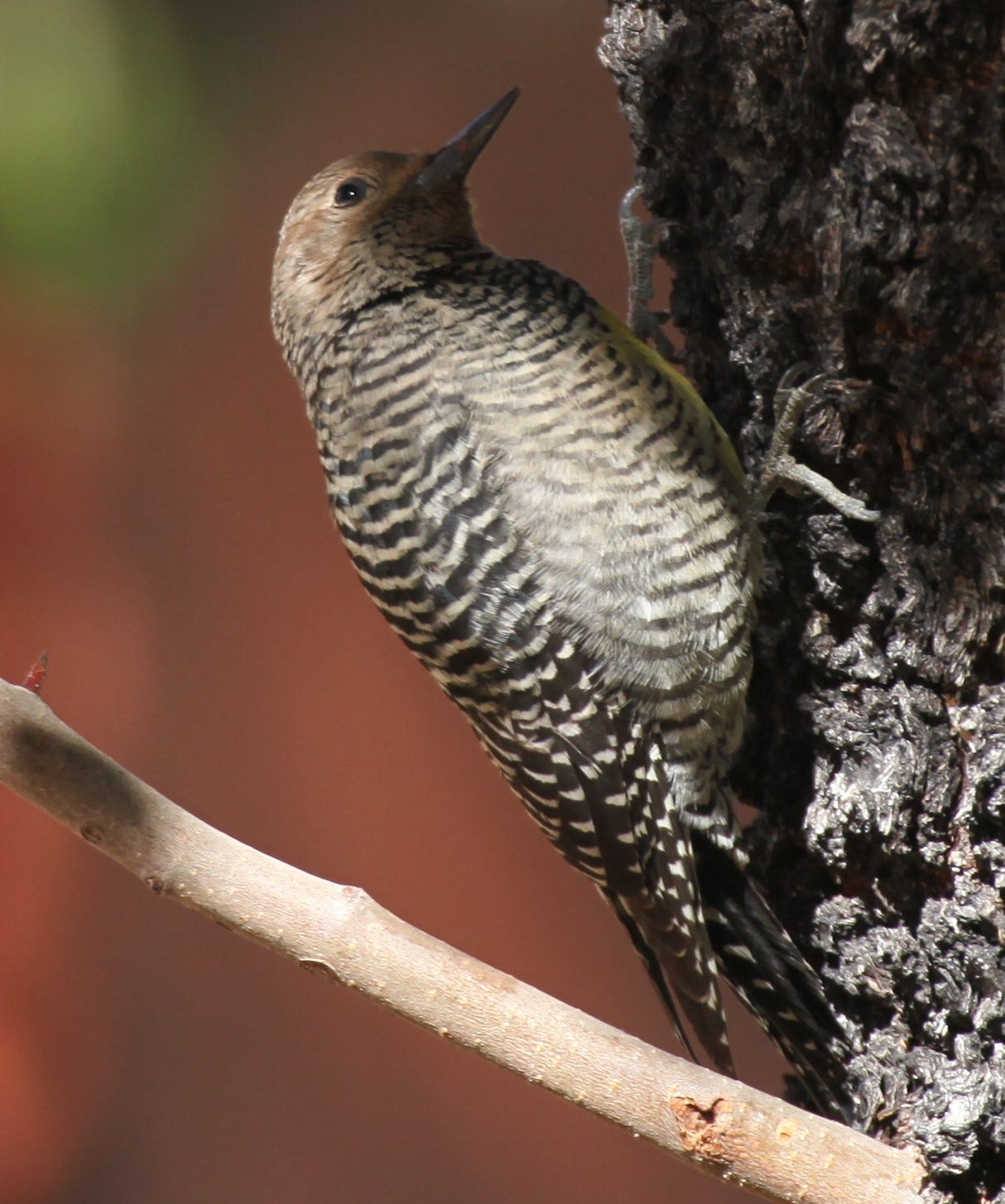
I’ve said before, the ocean diminishes you in its incomprehensible vastness. Something of which it never hurts to be reminded. And something we’ve felt intensely these last days.
The wife and I broke for Dana Point, California, our favorite place for laying November sun and salty air against our skin—and eating too much seafood and pizza (Beach Harbor Pizza with “the boys” Mario and Francisco!). And birdwatching. Nine days of birdwatching.
I spent my mornings beaching with binoculars and camera, my afternoons hiking with binoculars and camera, and my evenings strolling with binoculars, camera, and the wife.
Over bowls of ceviche at the harbor, with the ocean’s brine filling our pores, we watched for shadows drawing lines in the flat, black water. The marina offered shorebirds like western, pied-billed, and eared grebes, pelagic cormorants and brown pelicans that paddled and dove among the slips with their Boston Whalers. On the guano-splashed jetty off the Point, an American oystercatcher—a rarity among the black oystercatchers—probed the rocks for marine worms with a blunt orange beak.
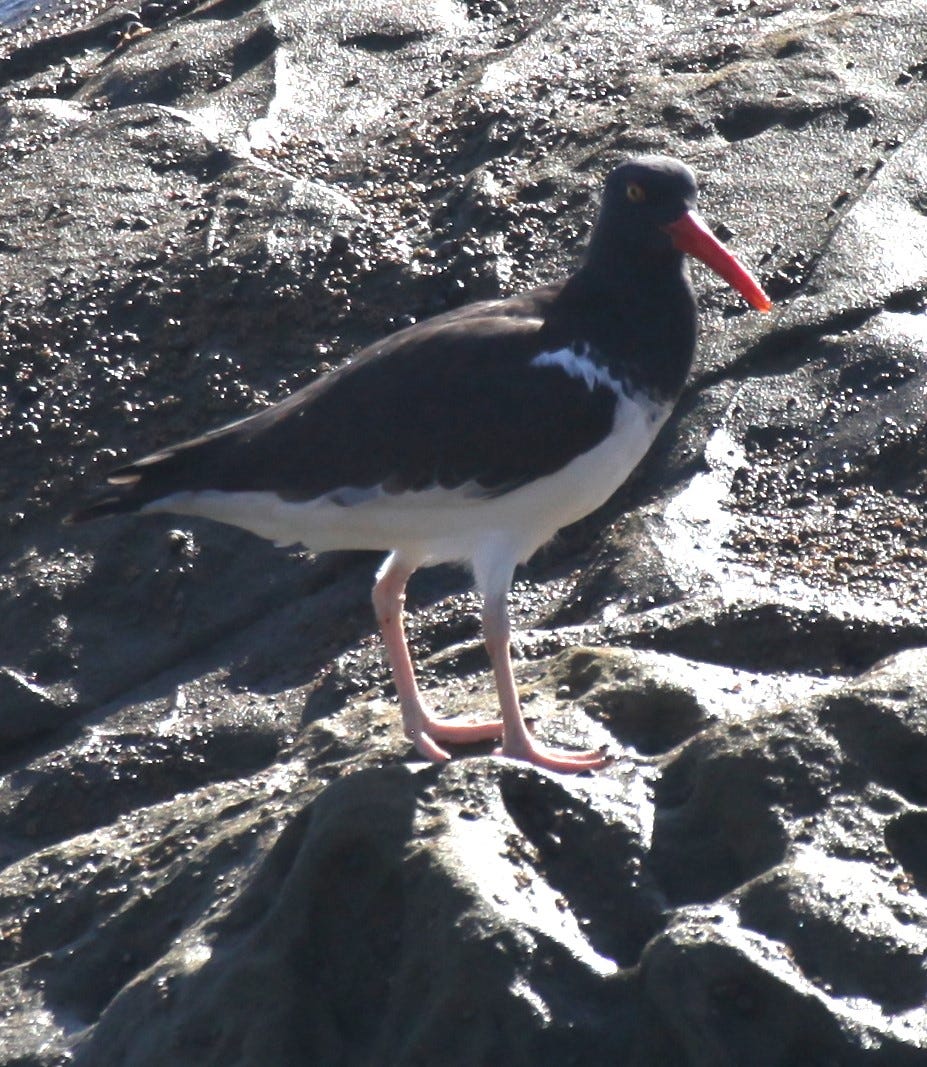
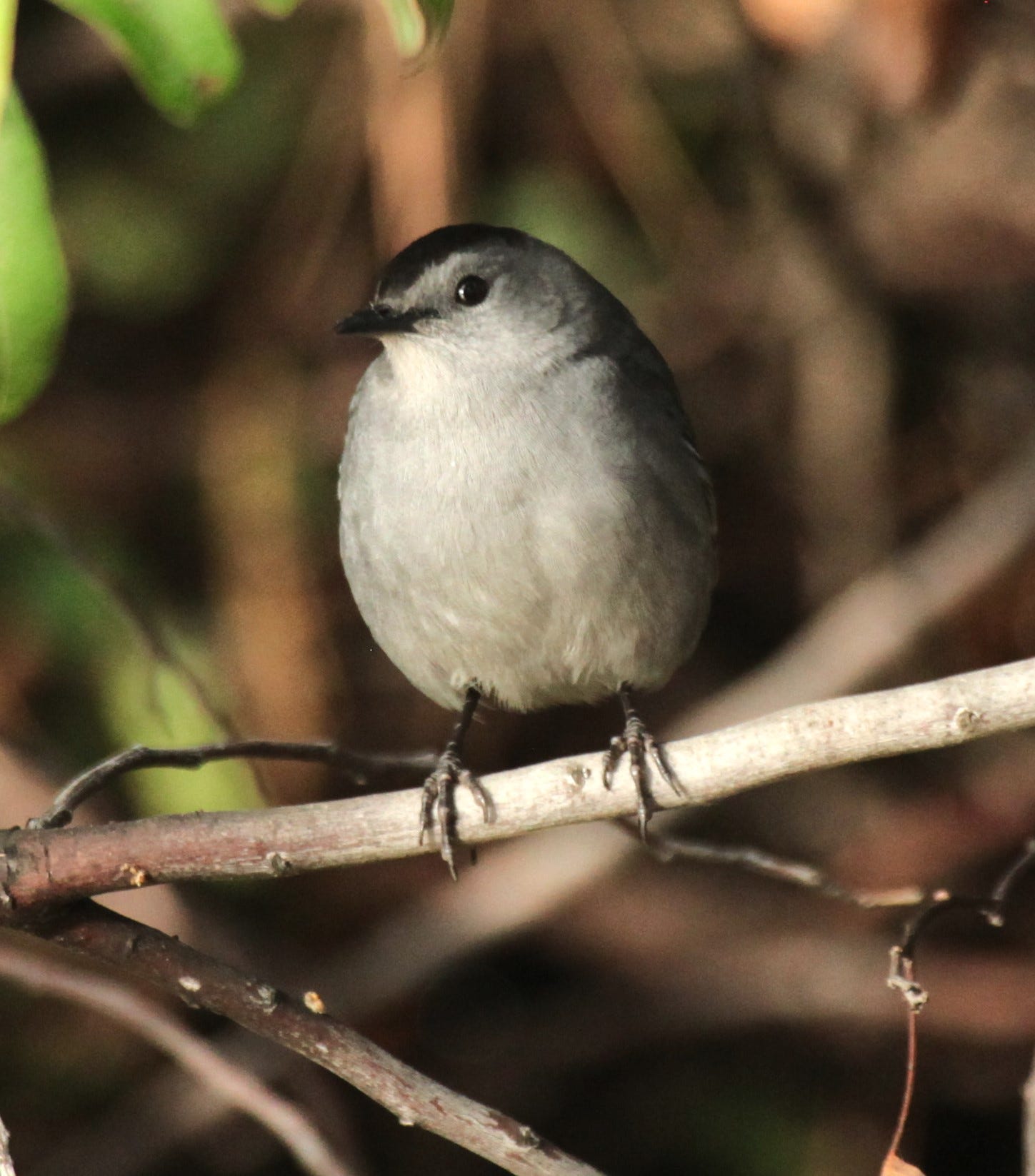
At nearby Doheny State Beach, a rare gray catbird had stirred the local birding community, bringing out clusters and knots of camera wielders like me. At San Juan Creek, where runoff from San Juan Capistrano meets the ocean in a swift muddy surge at high tide, sleek-winged royal terns hugged the sand with beaks always pointed into the wind. Black-bellied plovers sifted the silt, cross-stepping on the dark stilts of their legs. And, like tiny balls of dryer lint, eleven snowy plovers crouched invisibly among a single willet and whimbrel.
Which, like me of late, preferred their own company.
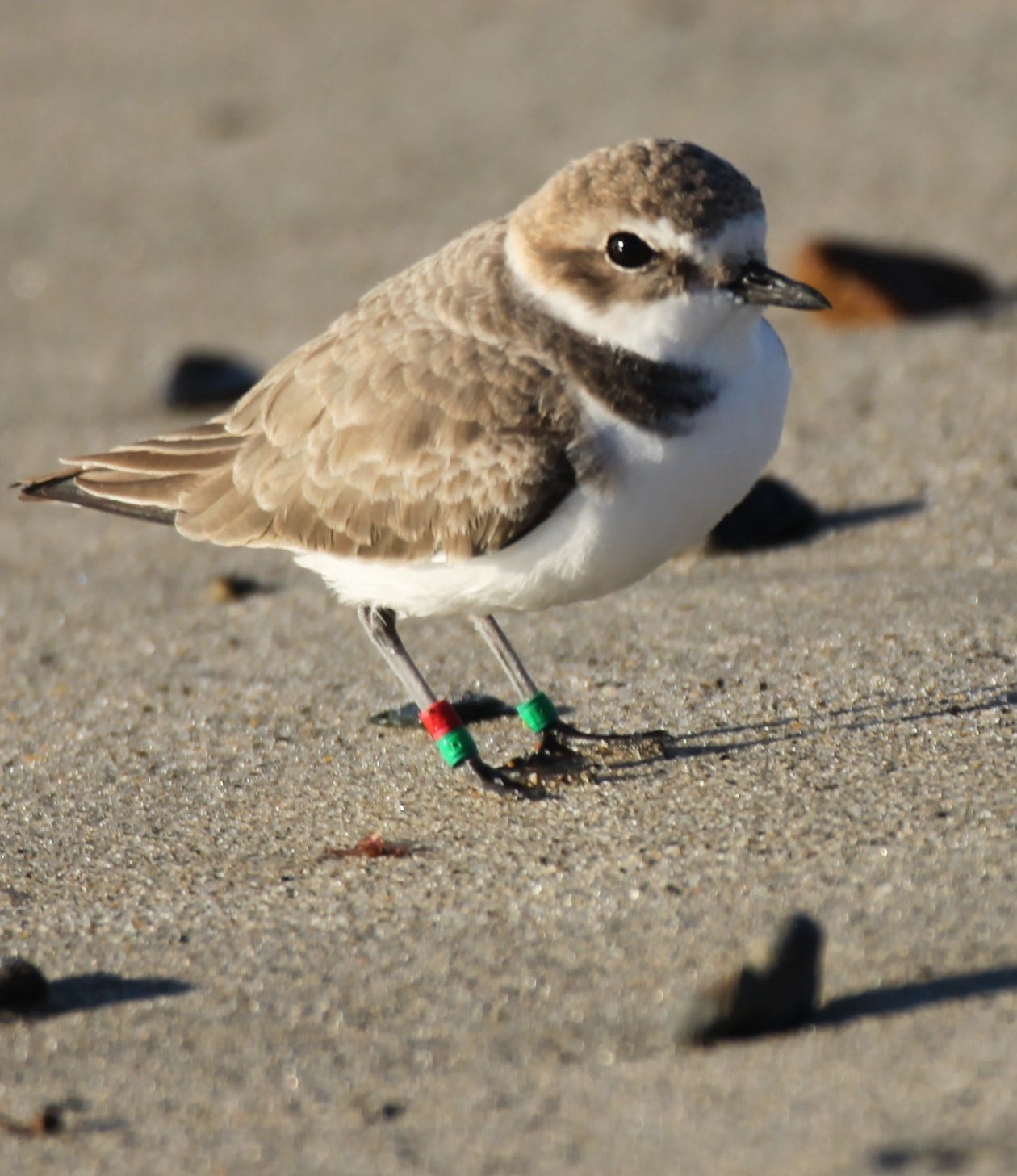
Thanks for reading! More to come!
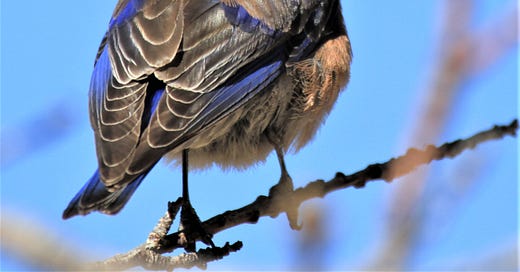



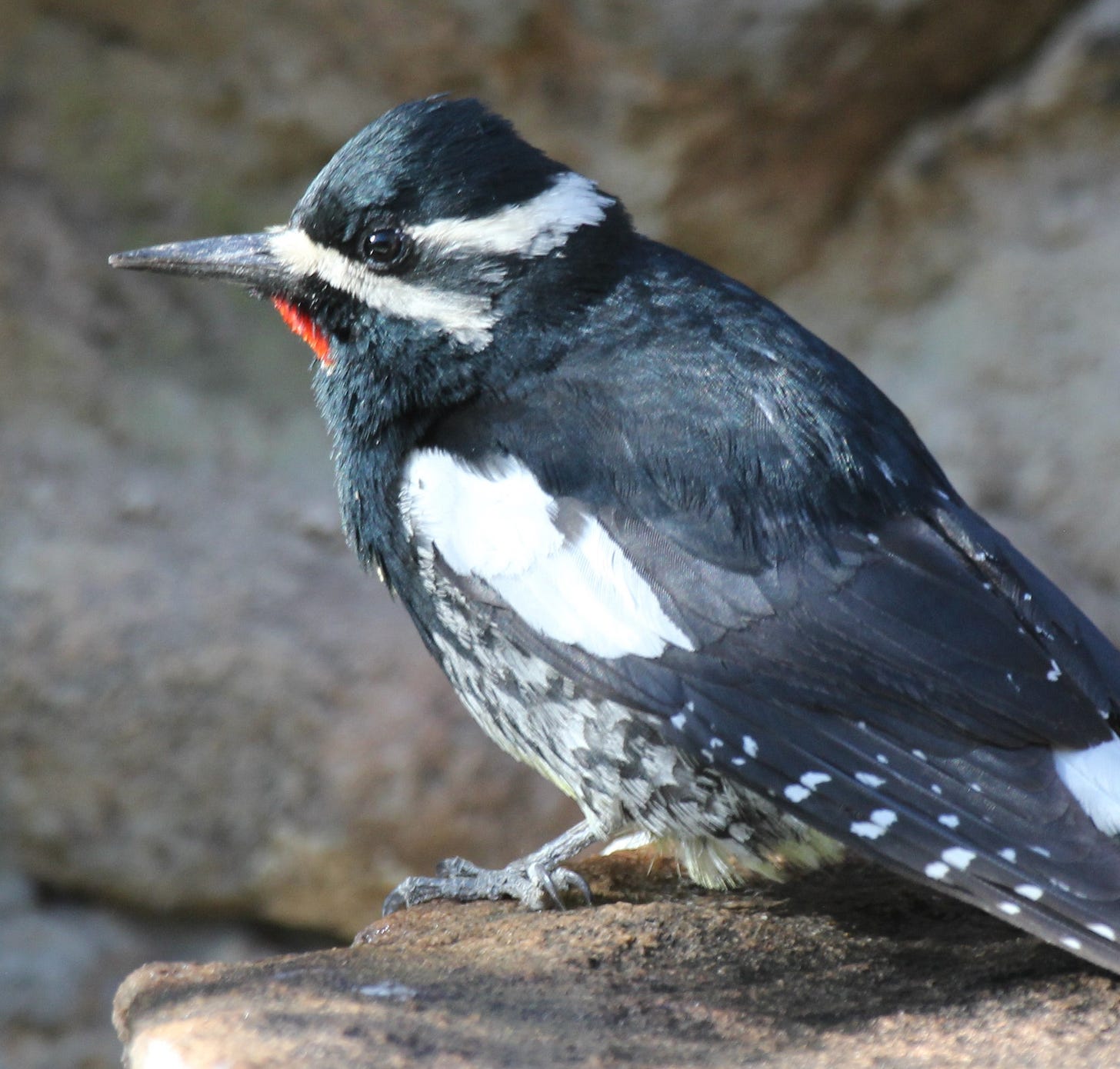
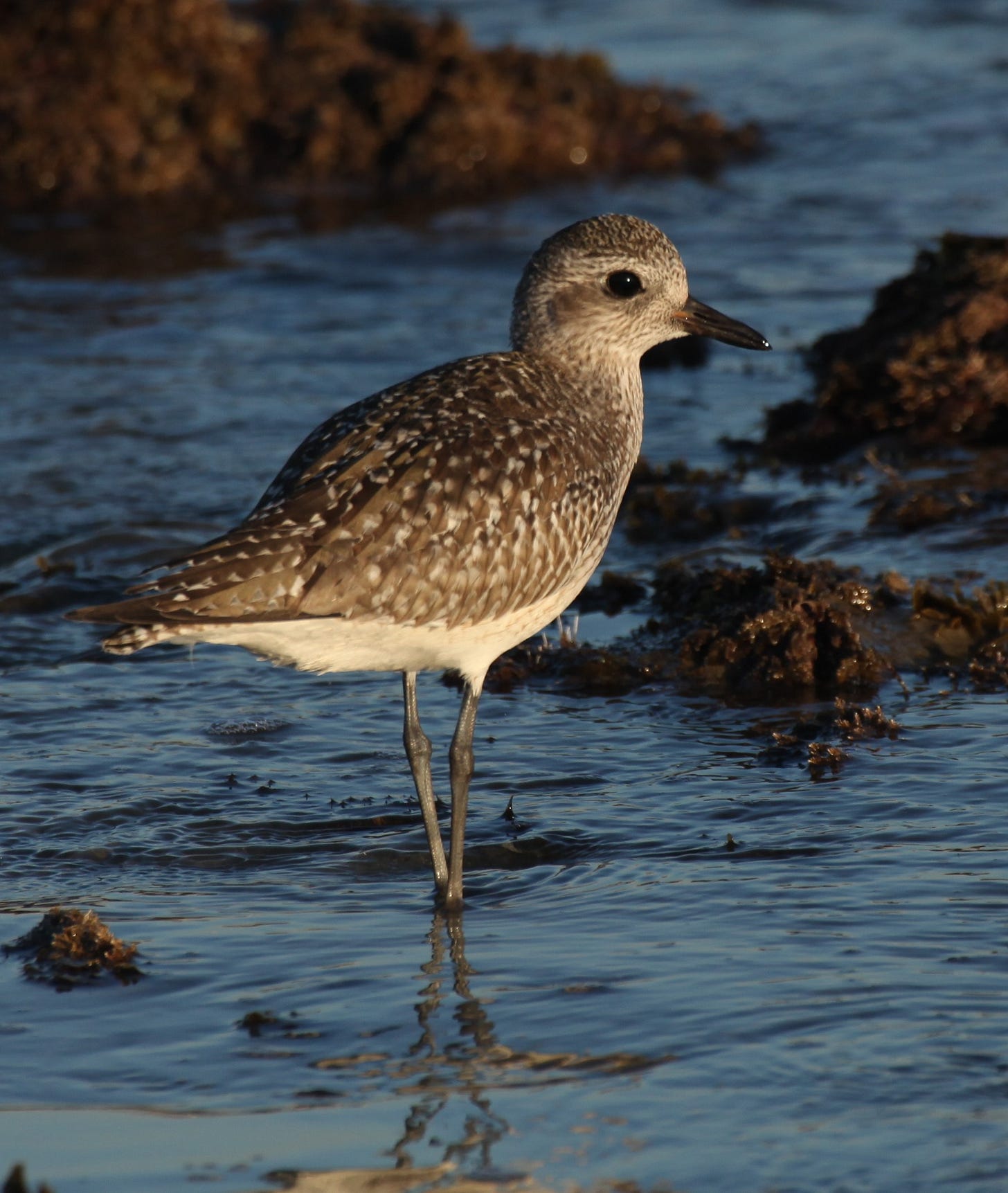
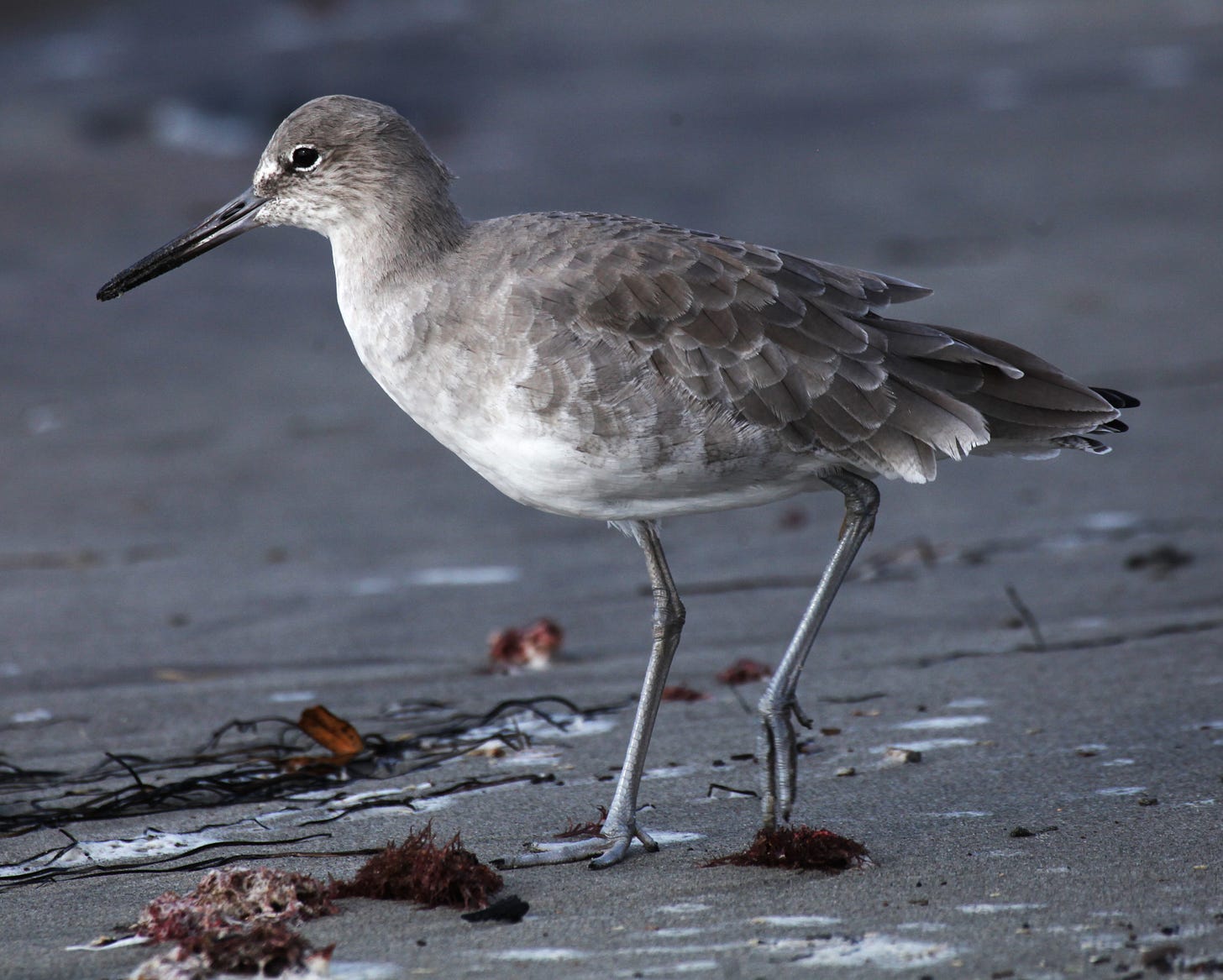
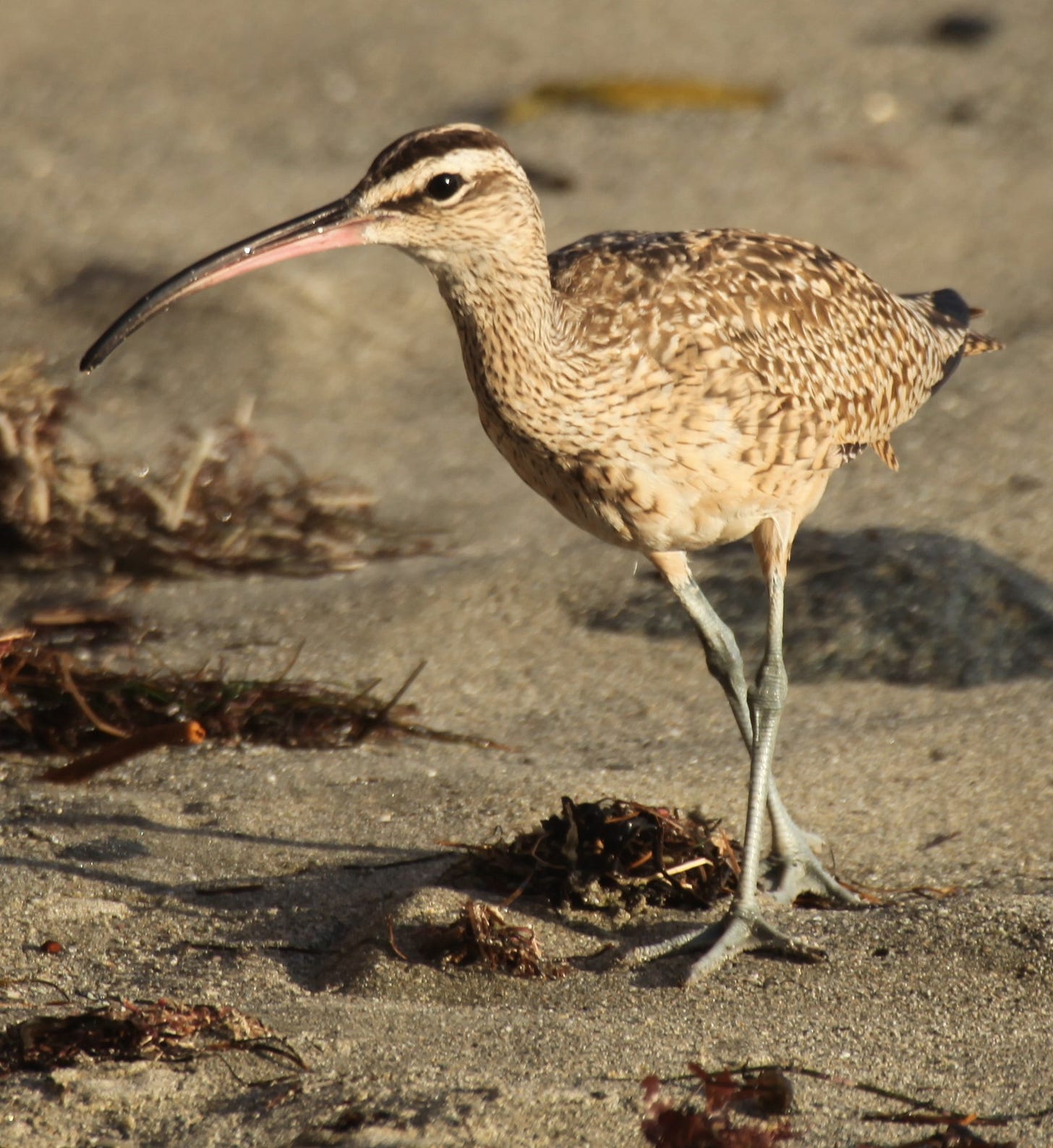
Ooh, the Western Bluebird, yes, it is a toss up, Cobalt or Lazurite.The Ornithologists back in the day that came up with names, so descriptive with everything else. I guess there were no artists among them, ‘looks blue to me, yeah , me too, ok write that down…’The Williamson Sapsucker, is not as showy as our yellow bellied, nevertheless what fun to see. Love the American Oystercatcher and that sweet little Black-bellied Plover looking very feminine . And last but certainly not least , a grand story about the Snowy Plover. As always, thank you for the view from a different shore.
Great getaway! My family is spending a week at Dana Point over Christmas, so I appreciate your suggestions on where to bird and eat. We plan to check out Catalina Island while we are there. Always enjoy your posts.